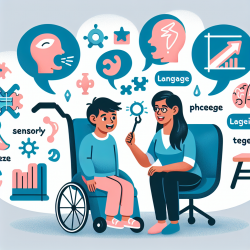The study "Développement de la Version Québécoise Francophone du Children's Communication Checklist - 2 (CCC-2) : Normalisation et Équivalence Métrique" provides valuable insights for speech-language pathologists (SLPs) working with French-speaking children in Quebec. The research validates the Quebec French version of the CCC-2, ensuring it retains the metrological qualities of the original tool. This blog explores how practitioners can leverage these findings to improve diagnostic accuracy and intervention strategies.
Understanding the CCC-2
The CCC-2 is a renowned tool for assessing language pragmatics, crucial for differential diagnosis between language disorders (LD) and autism spectrum disorders (ASD). The tool evaluates various communication aspects, including:
- Phonology and fluency
- Morphosyntax
- Semantics
- Coherence
- Pragmatics (initiation, stereotyped language, use of context, non-verbal communication)
- Social relations and interests
Why the Quebec French Version Matters
Previously, no standardized tools existed for assessing language pragmatics in Quebec French. The adaptation of the CCC-2 fills this gap, providing SLPs with a reliable instrument to evaluate communication skills in French-speaking children. The study confirms that the Quebec French version maintains the metrological properties of the original CCC-2, making it a valid tool for clinical use.
Implementing the Quebec French CCC-2 in Practice
SLPs can enhance their practice by incorporating the Quebec French CCC-2 into their assessment protocols. Here's how:
- Accurate Diagnosis: The tool helps differentiate between LD and ASD, guiding children to appropriate resources.
- Comprehensive Evaluation: By assessing various communication aspects, SLPs can develop targeted intervention plans.
- Consistency: Using a standardized tool ensures consistency in assessments, facilitating better tracking of progress over time.
Encouraging Further Research
While the study establishes preliminary norms for children aged 7-9 with LD, further research is needed to expand these norms to other age groups and populations. SLPs are encouraged to participate in ongoing research to refine and validate the tool further.
Conclusion
The Quebec French version of the CCC-2 is a valuable addition to the toolkit of SLPs working with French-speaking children. By implementing this tool, practitioners can improve diagnostic accuracy and intervention outcomes, ultimately enhancing the quality of care for children with communication disorders.
To read the original research paper, please follow this link: Développement de la Version Québécoise Francophone du Children's Communication Checklist - 2 (CCC-2) : Normalisation et Équivalence Métrique.










